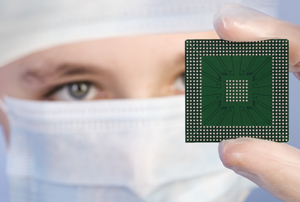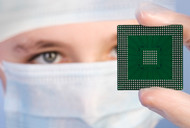
6 Common Mistakes of BGA Rework Ball Grid Array rework is one of the most challenging procedures performed at assembly facilities and repair depots around the world. Doing it right depends in large part on the skills and knowledge of the rework technician. That's why we say that BGA rework is mostly science, with a big slice of art thrown in!
Procedures for BGA rework are well-defined and long established, but there are six common mistakes. These mistakes can be costly leading to the following:
1. Excessive solder joint voiding
This is often due to incorrect solder paste selection or process parameters and can compromise the integrity of the attachment and require additional rework, or result in rejection if the voiding is over 25%.
2. BGA Pad damage during the BGA removal process
This is sometimes an unavoidable hazard, and it's made worse when conformal coatings and underfill are used. Repairing damaged BGA pads is a time-consuming major headache worth avoiding.
3. Incorrect BGA orientation or joint bridging.
This means additional rework thermal cycles, and the increased risk of damage with each successive application of heat.
These problems are preventable. Let's look at the 6 Most Common Mistakes in BGA Rework and how you can avoid them!
1. Inadequate Operator Training
We can't emphasize this enough! BGA rework technicians must be fully trained, their skills practiced and developed. They must understand the materials they're working with, the tools, the process steps, and the interrelationship of all factors.
They must have the skills to evaluate and 'size up' a BGA rework situation knowledgeably and skillfully before commencing rework. And they must be able to recognize the subtle, tell-tale signs indicating the process is off-track.
2. Inappropriate Equipment Selection
It's an old saying, but true, you need the right tools to do the job properly. For BGA rework, the equipment used must have the sophistication, the flexibility, and the capability to sustain a controlled, predictable and repeatable process.
This includes closed-loop thermal sensing and control, the robustness to be able to deliver heat as the process requires, and product handling capabilities for removal and replacement. Use the most capable equipment available; this is not an area to cut corners.
3. Poor Profile Development
The BGA rework profile is as important as the assembly reflow profile, and in most cases duplicates it. Without it, you won't achieve a successful and repeatable BGA rework process.
A poorly-developed thermal profile can result in damage to the assembly or BGA component requiring additional rework cycles to the same site, and damage or reflow of adjacent components. Good profiles must be carefully developed using correct thermocouple placement and analysis of the data that they provide.
4. Improper Preparation
A professional painter knows that a good, lasting paint job is 90% preparation. Similarly, before the first heat cycle is applied to a BGA rework site, there's a lot of preparation needed if the process is going to be done right.
This includes baking out moisture from the BGA device and the board assembly to prevent 'pop-corning' and other problems and removal or protection of nearby heat sensitive components to avoid damage or inadvertent reflow.
The right decisions need to be made in advance, such as whether or not to use solder paste, choosing the right solder paste stencil, and choosing the right chemistries and alloys.
There's plenty of preparation to do, and do right, before the actual rework cycle begins. This includes an accurate assessment of such things as solder ball size; device and ball co-planarity; solder mask damage and missing or contaminated pads at the PCB site.
5. Collateral Heat Damage
Reflow of adjacent component solder connections results in oxidation, de-wetting, pad and lead damage, wicking, starved joints, component damage, and other issues that can create a host of new rework problems.
The technician must be constantly aware of the effect of heat not only on the target BGA device, but also how it is affecting other components adjacent to it, on both sides of the assembly. The goal is to minimize heat migration beyond the BGA component being reworked, and this is a function of a well-developed profile and tight process control.
6. Insufficient Post-Placement Inspection
The world beneath a BGA component is a hidden mysterious place, but not from today's X-ray inspection machines. Problems such as excessive voiding and poor placement or alignment are immediately detectable with X-ray inspection.
But just like a Radar operator, an X-ray system user needs proper training to correctly interpret and understand the image that the machine is providing. The complexity of the BGA component and the different variations in the X-ray image demand it if maximum benefit is to be obtained from this significant - and indispensable - equipment investment.
Avoiding the 6 Most Common Mistakes in BGA Rework is the best way to ensure a successful, robust, and repeatable process with fewer headaches, higher yields, and reduced costs for a better bottom line. |


